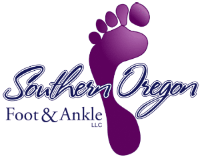 All bunions might seem the same at first glance, but every case is different. That’s why there are many different treatment options—including the Lapiplasty form of bunion surgery we will be discussing here.
All bunions might seem the same at first glance, but every case is different. That’s why there are many different treatment options—including the Lapiplasty form of bunion surgery we will be discussing here.
Lapiplasty has been a much-lauded procedure in the world of podiatry in recent years, and for very good reasons. For many patients, it can address a bunion and the problems it presents more comprehensively than other forms of bunion surgery. This leads to:
- Finer and more complete anatomical correction of the bones and joint.
- A greatly reduced risk of the bunion returning in the future.
- A typically faster recovery period and ability to bear weight on the foot sooner.
While Lapiplasty – or even bunion surgery as a whole – may not be the best option for every patient, we are very happy to provide this option at our practice.
Why Might Lapiplasty be Considered Over Other Procedures?
Lapiplasty differs from many other forms of bunion correction in the way it addresses all of the ways a bunion typically shifts bones out of alignment.
While many procedures were designed to address how the bones can shift outward and upward, they can also rotate (aka pronate). In fact, about 87% of bunion patients have at least some rotation in the first metatarsal. Lapiplasty addresses this factor as well, making it more of a “3D” solution than other procedures.
By achieving and permanently securing total correction across all planes, Lapiplasty leaves a much lower chance that the original factors that caused the bunion will return.
Certain other forms of treatment act more as a temporary fix, and the potential for recurrence of a bunion is higher with them. Research has shown that bunion correction procedures that don’t address all misalignment factors have as much as 12 times the risk of long-term bunion recurrence than Lapiplasty and other procedures that provide total realignment.
How Does Lapiplasty Work?
Lapiplasty takes advantage of advanced hardware to achieve bunion correction, allowing us to perform very precise work while keeping the toe stabilized in the proper position.
We use a special positioning instrument to shift, rotate, and reposition the toe back to its proper alignment. This instrument locks the position or the metatarsal in place, allowing us to continue the procedure in full confidence.
A guide tool is then used to make precise incisions into the area and cuts to the bone. This not only helps ensure the procedure is performed optimally, but also that excess cuts and collateral damage to healthy skin are limited as much as possible.
We also use a special imaging technique to obtain a full view of the bones within your toe in real time, to further ensure that the procedure is moving along correctly.
Once repairs are complete, we affix small yet highly durable titanium plates to the joint to hold the corrected alignment. These plates only stop joints from moving in ways they were never supposed to move to begin with, so this will not have any detrimental effect on your range of motion or ability to perform most physical activities once you recover.
What Should You Expect During Recovery?
Since Lapiplasty emphasizes a focused approach to repair and firmly securing the joint, you can expect fewer obstacles to recovery than with many other procedures.
Weight-bearing on the foot can typically begin again anywhere from within several days to 2 weeks, usually with the aid of a walking boot. A cast is not required in the majority of cases.
Most patients can expect to be back to using regular shoes in 6-8 weeks. While there can be some factors that can affect this timeline, the most influential by far is how well you follow your post-operative and recovery instructions. Although Lapiplasty bunion surgery may provide for an overall more convenient recovery than other methods, that is no excuse to slack off on your aftercare!
Is Lapiplasty Right for You?
The answer to that question depends on a number of things.
A patient’s previous medical history, activity levels, age, and other factors can play large roles in determining what the best recommendations are for addressing their bunion problem.
If you can properly manage symptoms using non-surgical treatments – such as custom orthotics, more accommodating footwear, and specialized stretching, among others – that will often be a preferred route to take over any form of surgery.
But if surgery is the best or only route, the specific procedure or procedures we may recommend can differ based on the unique needs of each patient. This is something we take the time to ensure we evaluate thoroughly, and that each patient also understands.
We will always be happy to discuss your options with you and answer any questions you may have to ensure you have everything you need to make a decision on how you wish to move forward.
Southern Oregon Foot & Ankle is here for all your bunion needs. Schedule an appointment with Dr. Merrill or Dr. Dimond at our Medford office by calling (541) 776-3338 or by filling out our online contact form.
